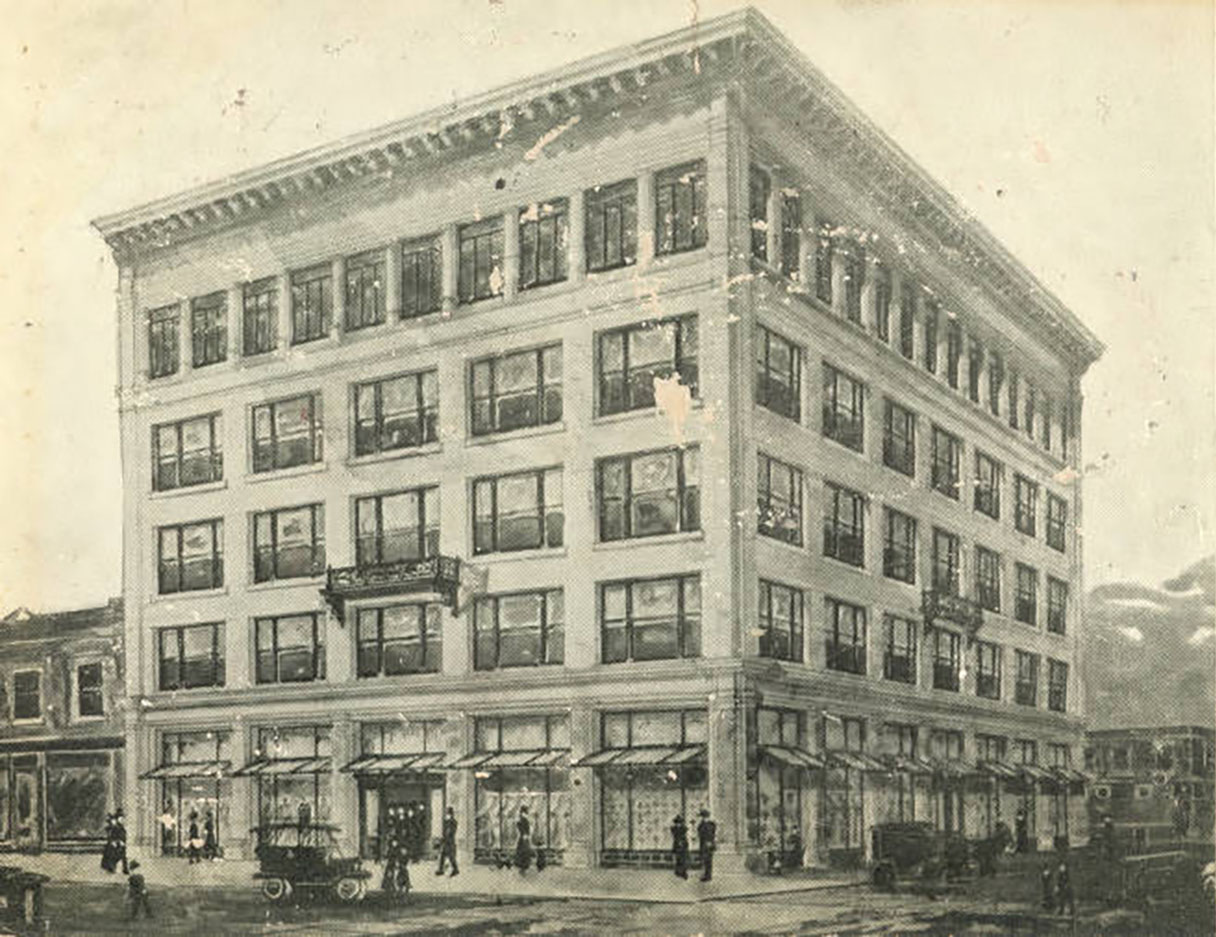The Story of Joplin’s Newman Building – Part 2: Construction, Labor Disputes, and Grand Opening (1910–1914)
By the summer of 1910, the steel frame of the Newman Brothers Building was climbing steadily above the intersection of 6th and Main Street. Commissioned by the Newman Mercantile Company, the structure had already captured the attention of the public through newspaper headlines and conversations in Joplin’s business circles. As the brickwork rose and the ornate details of the façade began to emerge, the final stages of construction were marked by moments of both accomplishment and strain.
Earlier in the year, a labor dispute between contractor H. F. Stange and the Building Trades Council of Joplin had threatened to slow progress before the project gained momentum. The issue centered on whether the work would be performed exclusively by union labor.

The eventual settlement required Stange to hire union workers when available, to pay prevailing union wages, and to submit any disagreements to an arbitration board within two days. This agreement kept the project moving forward, yet the atmosphere on site remained tense. Deadlines were tight, and everyone involved understood that delays could push back the anticipated opening.
One incident during the construction period nearly ended in disaster. Architect Austin Allen, who had been responsible for overseeing the building’s design, was touring the site with a hardware company executive when a cement beam gave way beneath them on the fourth floor. Both men fell approximately fifteen feet to the level below. They survived with only minor injuries, but the accident served as a sharp reminder of the dangers inherent in early twentieth century high-rise building projects. An investigation determined that inadequate timber bracing on the floor beneath had caused the failure. Reinforcements were added, and work resumed within days.
Through the summer and early autumn, the Newman Building took on its final form. Along both Main and 6th Streets, plate-glass display windows were installed to entice passersby with merchandise displays. A wide cast-iron canopy was added above the entrances to shelter customers from sun and rain. Inside, electricians ran wiring through walls and ceilings, and bronze-caged elevators were installed to serve all floors. Polished parquet floors reflected the warm glow of newly installed electric light fixtures.
The interior layout was planned with precision. The basement would house a grocery department filled with fresh produce, pantry staples, and imported specialties. The main floor was reserved for silks, fine clothing, and dry goods. Upper floors contained men’s and women’s apparel, furniture, home goods, and administrative offices, while the top level included storage areas. Amenities such as a tea room, a women’s rest lounge, and a rooftop garden for employees set the store apart from others in the region and reflected modern retail trends.
The long-awaited grand opening arrived on Monday, November 21, 1910. The Joplin News-Herald promised an event unlike anything the city had experienced. The Newman family decorated the building with flags, bunting, and electric lights that shone brightly after dark. A thirty-piece symphony orchestra performed for the opening, filling the air with music as shoppers gathered. Store windows were filled with elaborate displays designed to draw the largest possible crowd. Special trains brought visitors from surrounding towns, and Main Street was filled with people eager to step inside the new store.
The interior impressed as much as the exterior. Customers marveled at the elevators, the expansive departments, and the diversity of products ranging from Parisian fashions to produce from Missouri farms. Above the roofline, a large illuminated sign displayed the Newman name, a symbol of Joplin’s growth and modernity.
From the moment it opened, the building served not only as a retail center but also as a social gathering place. In January 1911, the rooftop garden hosted a reception for Gabriel Newburger and Sol Newman following their return from a business trip to the Orient. This event underscored the Newman family’s role in both the community and in international commerce. Over the following years, the store solidified its position as the premier shopping destination in southwest Missouri. Attentive service, frequent special events, and an array of amenities ensured that it remained a fixture of daily life in Joplin.
